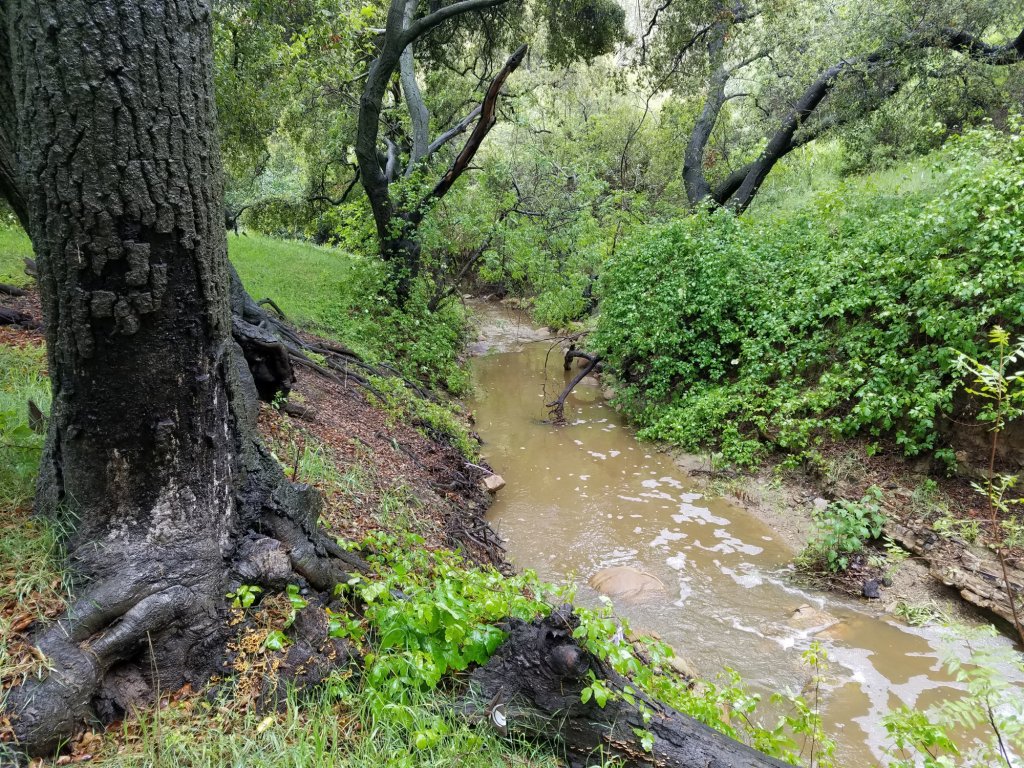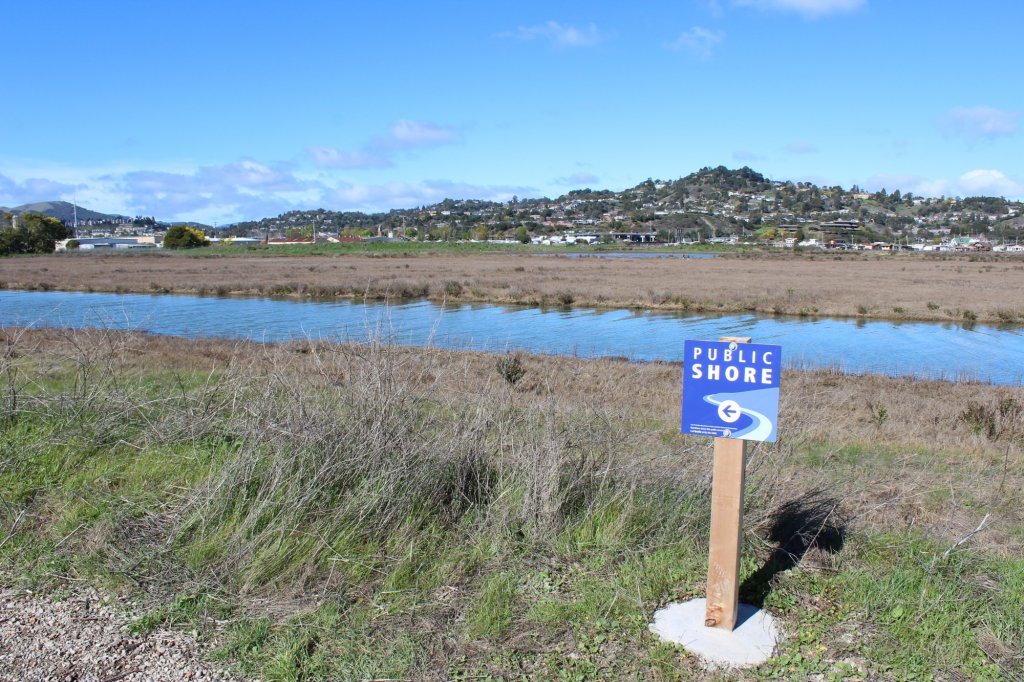Our Projects
San Francisquito Creek Bank Stabilization

Goal
WRA was retained to restore a failed bank bordering San Francisquito Creek that forced the Children’s Health Council (CHC) to temporarily close its playground and outdoor learning area due to the loss of over 25 feet of property and the resulting unstable, near vertical, 30-foot-high banks. Located off Sand Hill Road in Palo Alto, California on Stanford University property, the project site is vegetated by non-native grasses and herbs, as well as coast live oaks, bay laurels, and buckeyes. The portion of the creek that runs through the project site is designated as critical habitat for steelhead (Oncorhynchus mykiss), a state and federally listed species, so any in-channel work required special provisions to minimize potential impacts to the fish.
Approach
WRA worked with CHC to secure grant funding for the project, evaluate and select design alternatives, and integrate bioengineering approaches. The conceptual drawings helped communicate the project design to project stakeholders including adjacent landowners and local, state, and federal agencies to help gain consensus for the project. Other pre-design studies included a tree survey and biological resources assessment.
WRA prepared design plans and basis of design memorandum for the project with hydraulic modeling of the creek informing the design. The design calls for a living crib wall to stabilize the failed bank without disturbing the existing channel banks to minimize the potential for impacting extensive cultural resources known to exist on the property. Additional plans include a planting plan, erosion control plan, soil anchor layout, and tree removal and protection plan. WRA worked to secure Stanford University’s approval of the design, and also worked collaboratively with the client’s contractor Hanford ARC.
Our design team coordinated with regulatory agencies to complete permitting for the restoration project including the U.S. Army Corps of Engineers, Regional Water Quality Control Board, California Department of Fish and Wildlife, National Marine Fisheries Service, Valley Water, and the San Francisquito Creek Joint Powers Authority. Permits were acquired in Summer 2021 and the project was constructed in Summer 2022.
WRA assisted the client with construction-phase services including pre-construction wildlife surveys, biological monitoring during construction, construction observations, submittal reviews, responses to requests for information (RFIs) and preparation of change orders. Stanford provided archeological inspections and all the parties participated in weekly progress meetings. WRA is under contract to perform post-construction geomorphic and vegetation monitoring and reporting to the regulatory agencies as well as preparation of record drawings.
Impact
This is a great example of how a creek bank stabilization can both protect property and benefit the environment. WRA’s design required a heavy engineering solution to stablize the eroding bank coupled with native plants and seeds to further produce a long term, more ecological solution. The end results will improve habitat for special-status fish and provide a diverse, native riparian canopy that will benefit water quality, fish habitat, and other wildlife species. We are so incredibly proud of the end result and we cannot wait to see how this looks in the years to come!
View drone video of the project courtesy of Hanford ARC.





















